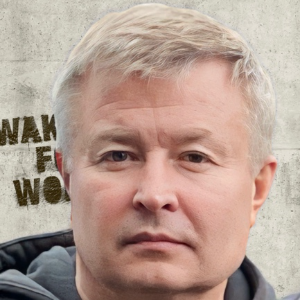Patrizia Ferretti, UCL Great Ormond Street Institute of Child Health, United Kingdom
Will be Updated Soon...

Will be Updated Soon...

Cellular scaffolds are a critical component of any system for tissue engineering and regenerative medicine. So far, poor attention has been focused on scaffolds that can mimic the extracellular matrix not only statically, but also dynamically, especially for tissues that have to [....] » Read More

Microgravity is one of the most significant stress factors experienced by living organisms during spaceflight. Controlled in vitro studies of cells and tissues under the conditions of microgravity can improve our understanding of gravity sensing, transduction and responses in liv [....] » Read More

Multiple sclerosis (MS) is a serious neurological problem because of its high prevalence, chronic course, frequent disability, and propensity to affect young people. The immunopathogenesis hypothesis underlies the origin of MS. Selective sorption activity of biocompatible magneti [....] » Read More

Withania somnifera (WS), a significant medicinal plant utilized in the Ayurvedic system, is a rich source of withanolides, which are pharmacologically active secondary metabolites. Withanolides, withaferin-A, withanolide-A, withanoside-IV, and certain sitoindosides are the primar [....] » Read More

Tissue engineering is the latest technology in creating artificial tissues ex vivo (outside the body). One of the materials for tissue engineering is scaffolds derived from the decellularization of xenograft tissues from animals, such as chicken tissues. One of the artificial tis [....] » Read More
Title : Side effect free cancer chemotherapy by directed gene delivery using nanomaterials
A C Matin, Stanford University School of Medicine, United States
Side effect-free cancer chemotherapy is an urgent need, which can be met by prodrug therapies (GDEPTs). Prodrugs are harmless but bacterial/viral gene products can convert them into potent drugs that can be confined to tumors by ensuring delivery of the activating gene exclusivel [....] » Read More
Title : Artificial intelligence (AI) in biomedical engineering
Hossein Hosseinkhani, Innovation Center for Advanced Technology, Matrix HT, United States
Application of Artificial intelligence (AI) in biomedical engineering technology is rapidly under development. The way AI applies in biomedical science is as the same as natural living cells consider playing the critical rules in their extracellular matrix environment. The presen [....] » Read More
Title : Novel gene therapy options for pulmonary hypertension
Yong Xiao Wang, Albany Medical College, United States
One of the common and devastating lung diseases Pulmonary hypertension (PH) is a common and devastating lung disease. The current primary medications for this disease are neither specific nor always effective. Moreover, the molecular mechanisms underlying PH are still poorly unde [....] » Read More
Title : Remote activation of mechanotransduction via integrin alpha-5 by aptamer conjugated magnetic nanoparticles promotes osteogenesis
Hadi Hajiali, University of Birmingham, United Kingdom
Introduction Magnetic particle (MNP) based technology platforms use superparamagnetic nanoparticles conjugated with targeting biomolecules to apply mechanical force directly to mechano-receptors on the cell surface, stimulating mechanotransduction and downstream signalling [1] [....] » Read More
Title : Cellular and molecular profiling of critical bone fractures in axolotl
Polikarpova Anastasia, The Institute of Molecular Pathology, Austria
To investigate if SCT cells are able to migrate and contribute to cartilage in CSD, we transplanted tissues with fluorescently labelled CT cells to the wildtype host prior to fracture surgery. The labelled CT cells are migrating to the CSD gap, and some are expressing cartilage p [....] » Read More
Title : Tumor cell microspheroids induced by non-contact mechanical forces
Itziar Gonzalez, The Spanish National Research Council, Spain
We present a novel device actuated by ultrasound to induce rapid formation of cellular spheroids in very short times of less than 5 minutes, an order of magnitude less than those of conventional systems, which usually require more than 24h. It consists of a 2D polymeric array wit [....] » Read More
Title : PPM based microecosystem today and tomorrow: Towards PPM secured healthy heart supported by personalized stem cell driven preventive, prophylactic, therapeutic and rehabilitative manipulations of the next step generation
Sergey Suchkov, The Russian University of Medicine, Russian Federation
A principally new and upgraded systems approach to subclinical and/or diseased states and wellness resulted in a new trend in the healthcare services, is called as Personalized and Precision Medicine (PPM). But despite breakthroughs in translational research that have led to an i [....] » Read More
Title : The promising future of the unique translational tool to manage cardiac self renewal and regeneration to secure the post infarction period
Sergey Suchkov, The Russian University of Medicine, Russian Federation
The approaches securing cardiac regeneration in post-infarction period are not available to be practiced. The key problem is the identity of cells be born to generate functionally active cardiac myocytes replenishing those being lost during ischemia. With identification of reside [....] » Read More
Title : Cross talk between H2S and interacting signaling molecule NO under nitroxidative stress response in bacteria
Svetlana Vasilieva, Institute of Biochemical Physics Russian Academy of Sciences, Russian Federation
For many years nitric oxide NO, hydrogen sulfide H2S and carbon monoxide CO have been considered toxic gases which at low concentrations present in the atmosphere. Then all these gases have been discovered to be produced endogenously to regulate numerous key physiological functio [....] » Read More
Title : Regeneration of the eye via ultrathin PDLLA-based nanofibrous membranes
Hana Studenovska, Institute of Macromolecular Chemistry, Czech Republic
Eye related diseases can cover diseases of the front segment of the eye as e.g. limbal stem cell deficiency (LSCD) but also diseases related to the back segment, the retina, as e.g age-related macular degeneration (AMD). In both cases one of the ways to treat the impaired part of [....] » Read More
Title : Durable immunomodulatory hierarchical patch for rotator cuff repairing
Liren Wang, Shanghai Jiaotong University, China
High re-tear rates exceeding 50% in degradable shoulder cuff patches, observed over a five-year follow-up, are attributed to the failure of degradable polymers alone to restore the inflammatory niche post-rotator cuff injury, hindering tendon-bone interface healing. Theoretically [....] » Read More
Title : Macrofluidic single use bioreactors
Gilad Gome, Hebrew University Faculty of Agriculture, Israel
One of the main challenges of cultured meat is reducing costs of production, often described as scaling. The main components of the operation are cells, media, scaffolds and bioreactors. This work presents an alternative to current stainless steel or glass bioreactors and uses pl [....] » Read More
Title : Generating scaffolds with antimicrobial properties for tissue regeneration using low temperature plasma (LTP)
Komal Vig, Alabama State University, United States
Bypass surgery, using the autologous vein has been one of the most effective treatments for cardiovascular diseases. More recently tissue engineering including engineered vascular grafts to synthesize blood vessels is gaining usage. Dacron and ePTFE has been employed for vascular [....] » Read More
Title : Human adipose stem cells promote the formation of capillary networks in pre-vascularized skin model
Yu Chieh Wu, Institute of Physiology, CAS, Czech Republic
Animal models have been used for decades in various physiological, pathophysiological, pharmaceutical, toxicological and other biomedical studies. However, significant obstacles of these models are ethical issues, considerable costs, and limited translatability of study outcomes [....] » Read More